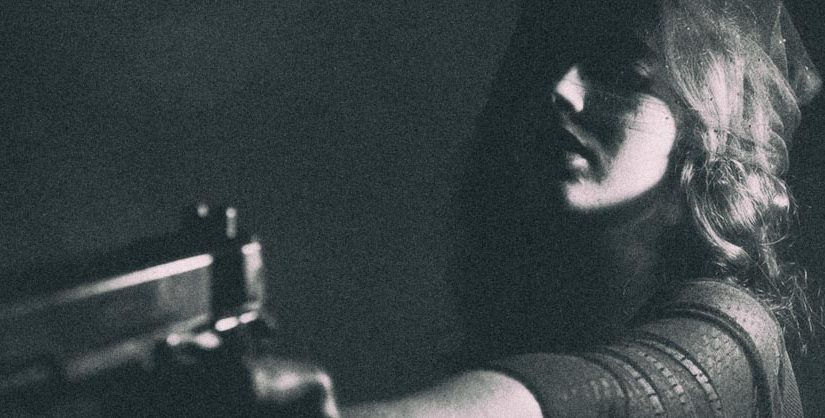You might know her as a “maneater” or a “vamp”. What is the ‘femme fatale’ archetype, where did it come from, and what is its purpose in fiction?
What is the femme fatale archetype?
A femme fatale is traditionally a seductive female character who lures the male protagonist into danger. The term translates to ‘fatal woman’.
Whether she appears as a film noir vamp enticing a man to commit murder on her behalf, or as an unjust and fictionalised media portrayal of a real woman à la “foxy Knoxy”, this stock character is drenched in masculine insecurities.
If the archetype we described in our last blog post in this series (“the damsel”) is a woman to be idolized and rescued, a femme fatale is to be ultimately feared and condemned.
She’s most well-known in a film noir context since this genre was particularly saturated with the archetype. However, its history stretches as far back as misogyny.
The femme fatale’s intoxicating characteristics were given a supernatural quality in older stories - thus, she can often be compared to a demon, vampire, or witch, and these comparisons have survived today.
Typically, her power is not a brute strength but lies in traditionally ‘feminine’ powers such as her charm and heightened sexuality, which the archetypal femme fatale uses to get what she wants.
What are some examples of femme fatales in fiction?
So now that we know what a femme fatale is, what are some examples of the archetype in fiction?
Femme fatale in the Gothic
Romantic poets took a shine to the femme fatale figure of myths and legends, perhaps because of Romanticism’s fascination with the sublime - the experience of seeing something beautiful, yet powerful and frightening.
John Keats, a second-generation Romantic, even penned a poem named ‘La Belle Dame Sans Merci’ (the beautiful woman without mercy).
This Gothic fascination with the femme fatale continued into Victorian literature, where she changed shape to mirror fears surrounding the New Woman and her threat to Victorian masculinity. Adventure writer Rider Haggard encapsulated the femme fatale in the form of an immortal woman simply named Ayesha who is often referred to as ‘She’ or ‘She-who-must-be-obeyed’.

An exotic yet imperial force to be reckoned with, She is the ultimate femme fatale - she literally paralyzes the male characters with her ethereal beauty, but is also highly intelligent and has supernatural powers.
However, as with many femme fatales, her power is undermined and defeated in the end to satisfy cultural conservatism. In She, Ayesha transforms into a tiny monkey at the end before her death, in a rather on-the-nose portrayal of Victorian fears of devolution.
Femme fatale in Film Noir
The most familiar image of the femme fatale is that which we see as a trope in film noir movies which were produced during and after World War II. The war, and women taking on male professional roles during this time, marked another wave of female liberation and sparked post-war anxieties of the role of men in society.

There’s plenty of suspicions and double-crossing in Film Noir, and the femme fatale is often at the heart of it. Predatory and ruthless, she reels in the cynical protagonist with her charm and lures him into committing crimes of passion.
The reveal of her true nature is often reflected in costuming in these films. For example, Phyllis Dietrichson in Double Indemnity starts off wearing very light colours and eventually transforms into an all-black-wearing vamp.
Femme fatale in contemporary fiction
Femme fatale archetyping didn’t stop after the mid 20th century - it continues to be an irresistible trope, particularly for film and tv directors such as David Lynch.
Laura Palmer is a great example of a more modern femme fatale.
Don’t read this section if you don’t want Twin Peaks spoilers but to be honest, it aired in the late 1990s… it’s time you watched it!

And what makes Laura modern? The fact that she is sympathetic. Whereas femme fatale archetypes in film noir are unsympathetic and they are designed to be seen as a threat and ultimately overpowered, Laura is more complex.
Not an easy feat, seeing as the first time we encounter Laura as viewers, she’s a dead body wrapped in plastic. Everything we learn about her and her life is through the people around her.
Through the townspeople, we learn that Laura has a picture-perfect public image. A homecoming queen, perfume counter employee, Meals on Wheels volunteer for the elderly, a carer for a mentally disabled man, and EFL tutor. A dear daughter, sister and friend. A heartbreaking loss for the whole Twin Peaks community.
Then there’s her other life that not even her closest friends know about or understand. Laura Palmer’s shadow self is a cocaine addict who has a side gig at a brothel. Outside of her conventional relationship with a quarterback, she was having an affair with her best friend’s crush, and outside of that affair, more affairs… Laura seemed to cast a spell on everybody she met, as well as having a strange side to her character that sees what really lies in those dark woods.
What sets Laura apart from other femme fatales is that ultimately, she is a victim. Her secrets don’t affect the way she’s put on a pedestal by the community as a whole. It’s important that she’s only 17 years old and is clearly portrayed as a victim of sexual abuse - this gives us some sympathetic insight into why she matures so quickly, juxtaposed with her best friend Donna’s naïveté.
Lynch plays with the role of femme fatale in other characters in the show, too. Josie Packard, so seemingly fragile, turns out to be a classic cold-blooded femme fatale, responsible for the death of her husband. On the flipside, Audrey Horne attempts to play the role of the femme fatale to get what she wants but only puts herself in danger. The same age as Laura, Audrey is also a child who should be protected. Her curiosity and brazenness in trying to solve Laura’s murder herself are portrayed as armour to conceal a young girl in pain.
The contemporary femme fatale is as she should be - a well-considered female character with all the complexities and motivations a flesh-and-blood human being has. No succubi or sirens here.
What can the femme fatale archetype teach me about writing?
In our last blog post on archetypes, the resounding message of the damsel archetype was that archetypes are helpful, but they’re not enough.
I’m going to go ahead and say the same thing this time. Think of the femme fatale as a mirror image of the damsel. Both are a reductive and sexist way of looking at femininity. Both seek to minimalize and undermine a woman’s personal power and complexity of character.
All in all, both archetypes are interesting ways of looking at society and culture, perhaps an interesting lens through which to critique it. But if you simply try to replicate it, your character won’t be believable. Take a page out of Lynch’s book and ask yourself who the woman really is behind the lipstick or the smoking gun.

